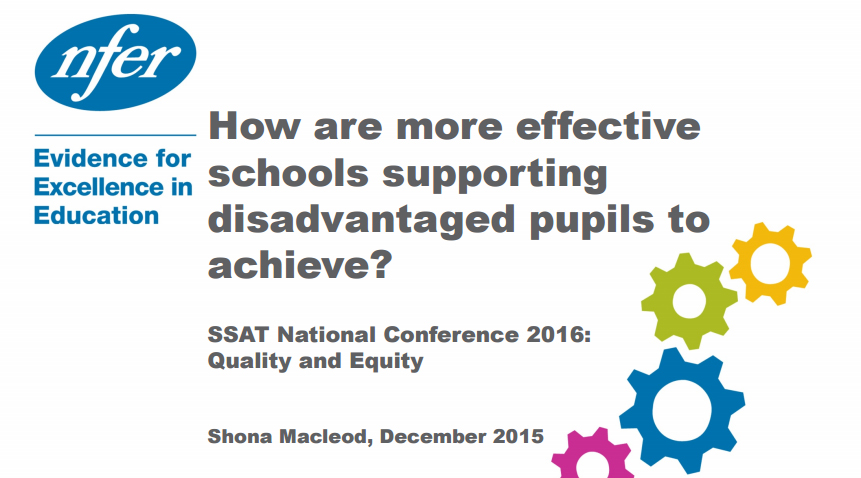
NFER’s Shona Macleod examined the evidence to show more effective schools’ ways of supporting disadvantaged pupils.
Recent research into the effective approaches to boosting the achievement of disadvantaged pupils includes a survey of over 1,300 primary and secondary schools, interviews with 49 leaders of primary, secondary and special schools, and an analysis of English school performance data.
In her breakfast session on day 2 of the conference, Shona Macleod, senior project manager at National Foundation for Education Research (NFER), identified the more successful approaches.
She stressed that the findings were correlations only, and should not be interpreted as evidence of causal effects.
The attainment gap narrowed slightly between 2005 and 2013, but is still significant, she pointed out. Disadvantaged pupils are still more likely after leaving school to experience low wages, unemployment and poverty as adults, thus passing on the disadvantage to the next generation.
The studies found key features of the more successful schools’ approaches included:
- An ethos of attainment for all, seeing all pupils as individuals; ‘all pupil premium students are not the same’
- Focus on behaviour and attendance, following up any lapses quickly with the student and their family. Also providing emotional support in the early stages, as well as later.
- Meeting individual learning needs, including the identification of barriers, interests, and what will help each young person.
- Deploying staff effectively. This includes identifying their strengths and devolving responsibility to the front line – especially, using TAs well, for example having them work 1-1 or with small groups, but not always with the same child.
- Data driven, responding often and in detail to evidence at classroom level (not centralised). Marking schemes that recognise achievement and set out next steps in learning.
- Clear, responsive leadership; all staff being responsible for pupils’ attainment; an open, collaborative working culture making effective use of links to local and national networks ‘ such as SSAT,’ said Shona Macleod.
The NFER report on this work, published in November, also shows some broader characteristics shared by the most successful schools in this context:
- They were selective.
- Pupils’ prior attainment on average was higher.
- The most successful regionally were in the north-east.
- Teaching schools did particularly well.
- Small academy groups did well, as did free schools, on average.
- Those with higher proportions of pupils from disadvantaged backgrounds also managed them better.
SSAT senior education lead Andy Williams closed the meeting by pointing to the Educational Outcomes database (a membership benefit), which can be a useful tool in comparing your KS2-KS4 progress with comparable schools’.

Download the November NFER report.
Follow NFER on Twitter: @TheNFER
Follow SSAT on Twitter: @ssat
View photos from the conference here.
